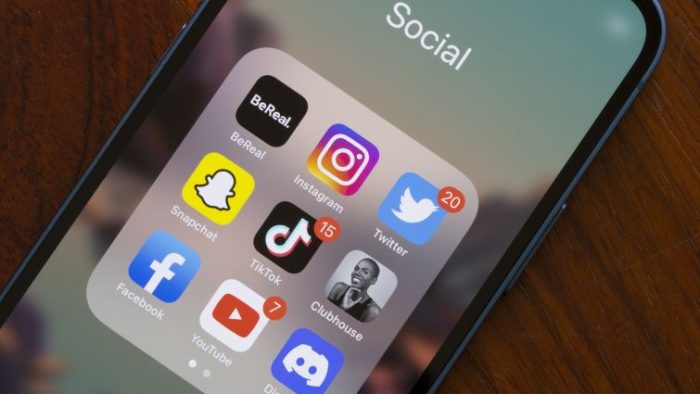Best Social Media Guidelines for Employees in 2024
 Publié le 19 February 2024
Publié le 19 February 2024
Know how to create and project a professional image online with the best social media guidelines for employees in 2024.
Imagine scrolling through your Instagram feed and stumbling upon a post from your colleague. It’s a short rant about a difficult client, complete with some colorful language and a snippet of confidential information. This might sound like something you see at the beginning of a drama special, but it happens in real life, as well.
It’s clear that the lines between professional and personal online presence are blurred.
Social media platforms in 2024 are no longer just a place for funny cat videos. It’s a potent professional network that can make or break reputations, both personal and corporate. That’s why you need social media guidelines for employees that will protect the digital presence of your company and enable creative outlets for your workforce.
In this article, we are diving deep into the world of social media management with the goal of making your online brand reputable, safe, and inviting.
Understanding Social Media Guidelines
Social media guidelines are your rulebook for the digital playground.
These guidelines are there to make sure all employees in your organization play nice and stay safe online, especially if they are representing the workplace in an official capacity.
Simply put, SM guidelines are best explained as a set of recommendations that describe employee’s online behavior. It’s not an official standard operating procedure (SOP) document as a Social Media Policy but rather a list of dos and don’ts of the digital presence.
If you are wondering why these guidelines are important, think about the potential reach of every tweet, post, or share you make. It can get to hundreds of people, or even thousands if it gets viral. Such content is a powerful representation of your company and culture.
If it’s according to company social media guidelines, this can of reach can be a great way to build a strong and versatile brand. Otherwise, it can jeopardize your brand reputation and even damage client relationships.
But don’t think that the best social media guidelines are only there to limit the creativity of employees and make them blindly follow the rules for the sake of the company’s reputation. They might look like tools to enhance your professional image, but they are also there to protect your employees and confidential information.
Benefits of Social Media Guidelines
There are many benefits of well-structured social media management. Here are a few things to consider:
- Risk management — Did you know that according to a survey by CareerBuilder, 70% of employers use social media to screen candidates during the hiring process? Online persona can determine the career path, so social media guidelines can help you keep a professional online presence.
- Brand representation — The online presence of employees is a direct reflection of the employer. Guidelines are here to make this reflection positive, maintaining the company’s and employees’ reputation.
- Clarity and consistency — Ever been in a situation where you’re unsure if sharing that industry article might be overstepping a boundary? Clear guidelines take away the guesswork, giving you confidence in your online interactions.
- Empowerment and engagement — With the right guidance, employees don’t simply waste time scrolling through their feeds. Instead, they engage with content in a way that benefits their personal growth and your professional brand.
Best Social Media Guidelines for Employees
1. Understanding and Respecting Privacy Settings
First on our list of social media guidelines is the power of privacy settings. Considering almost all employees have an online presence that blends professional and personal lives, it’s important to control who sees what. That’s where privacy settings come into play.
Most social media platforms offer a smorgasbord of privacy options. You can tweak who sees your posts, who can tag you, and even who can comment. As a matter of fact, about 54% of social media users adjusted their privacy settings in 2021. This stat shows us how much people are getting “privacy-savvy” and why it’s so important.
Remember that social media platforms often update their privacy policies and settings, so employees need to keep an eye out for any potential changes.
2. Professionalism in the Digital World
This social media policy shows us how tricky it can be to balance carefree posting and professionalism online. Employees are the ambassadors of companies, so every share, comment, and like can build up the brand or cause friction.
The best way to handle this balance is to have clear do’s and don’ts.
Employees should be encouraged to share valuable insights, new career skills, thoughtful articles, or achievements. This can build a strong brand and online reputation for the company and its employees. On the other hand, they need to stay clear of heated arguments and biased opinions in comments.
3. Transparency and Authenticity Online
Being online is like attending a huge party where your boss, friends, and even your grandmother are attending. So, you want to be yourself but also pay attention to your behavior and reputation. That’s the idea behind balancing transparency and authenticity online.
When employees post on any social media, you can implement a similar disclaimer as Intel did. They insist that employees add a sentence to their work-related posts that goes, “This is my personal opinion, and it does not represent the opinion of Intel Corporation.”
4. Navigating Legal Landscapes
Now, employees might not be familiar with all the laws, and they don’t even think about them when they are creating an Instagram story. That’s where clear social media guidelines can save the day and prevent legal headaches.
Make sure everyone knows how to credit sources, respect copywriting laws, and overall be mindful of what they share on their accounts. Avoid sharing copyrighted material without permission, making defamatory statements, or revealing confidential information.
This is especially important for people who work with sensitive financial information because the line between sharing and oversharing can be thin.
5. Safeguarding Confidential Information
In the journey of navigating social media as a professional, an important step is understanding how to handle confidential information. Look at this policy as keeping a friend’s secret. You need to be responsible, trustworthy, and show discretion.
A lot of employees have access to sensitive data in their workplaces. Leaking that data on social media accounts can have devastating consequences for the company and the employee, even if it’s not intentional.
The problem is how to define which data is confidential.
The best approach is to start from the leadership and insist they set the tone with social posts. In addition, there are great training and workshops online on handling sensitive information.
In the end, all employees should have a general understanding of social media guidelines and skip posting if they are in doubt about breaking confidentiality.
6. Balancing Social Media and Work
Social networks can be a great source of information, fun, and networking. However, wasting too much time on the phone while working can become a problem.
So, the ideal scenario and guideline would be to have dedicated social media time during working hours and possibly limit the visited platforms on work-issued equipment.
For example, LinkedIn is great for professional networking with industry leaders and groups. You can encourage people to join in creative discussions and share valuable information there that will build up the company’s reputation.
The Dynamic Nature of Social Media Guidelines
If you follow our advice and come up with great social media guidelines, your job is not finished yet. Trends and platforms are constantly changing, so you need to keep up with this dynamic.
Keeping guidelines up-to-date ensures they remain relevant and effective.
It all starts with the leaders, so they need to show engagement and true interest in social media behavior and online representation of the company. When employees have bosses’ Facebook posts to look to as reference, the are less likely to post something compromising.
Open communication, feedback, and training sessions are also a must. Guidelines are only effective when everyone understands the meaning behind them, so openly discuss why certain posts are great and which ones could be better. If the implementation of guidelines is not smooth, always consider additional training and workshops to make it a less bumpy ride.
Conclusion
Whether it’s understanding the nuances of privacy settings, striking the right balance between personal expression and professional discretion, or staying abreast of the latest legal considerations, the best social media guidelines for employees in 2024 serve as a crucial roadmap.
Each interaction online contributes to employees’ personal brand and, by extension, reflects on the organization. It’s about making informed choices and understanding the impact of our digital footprints. All we need is a thoughtful approach that uses the power of social media for a positive digital brand for everyone.







